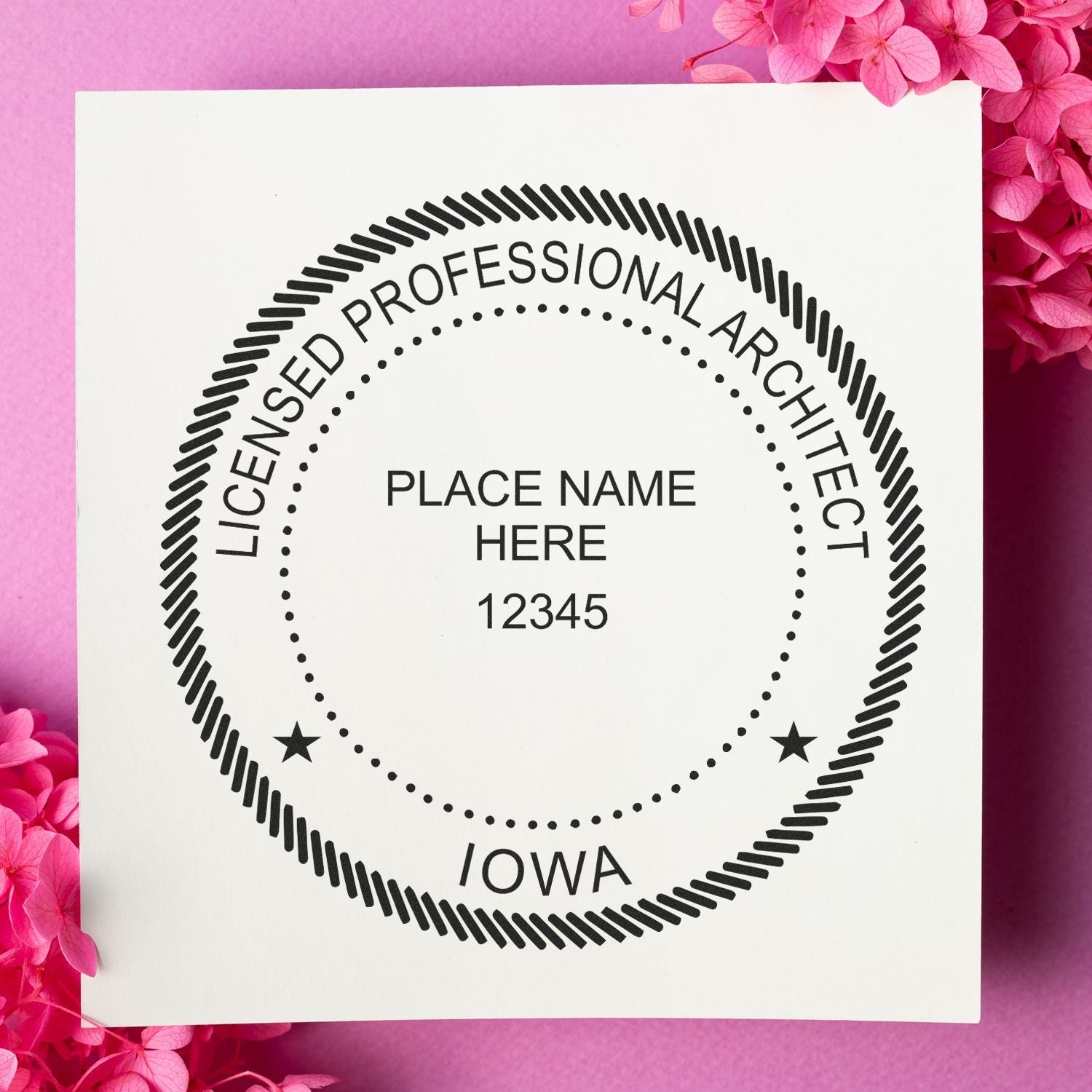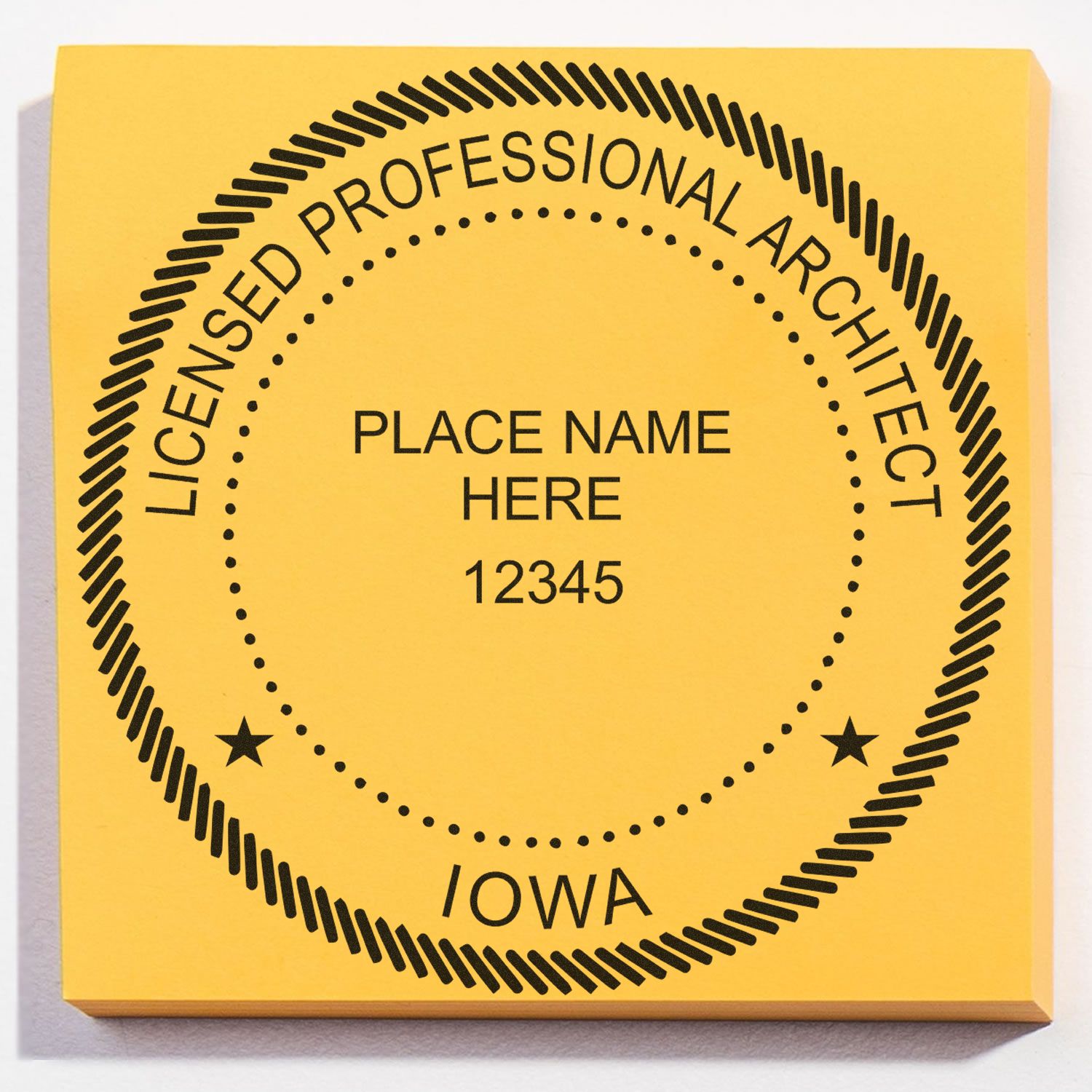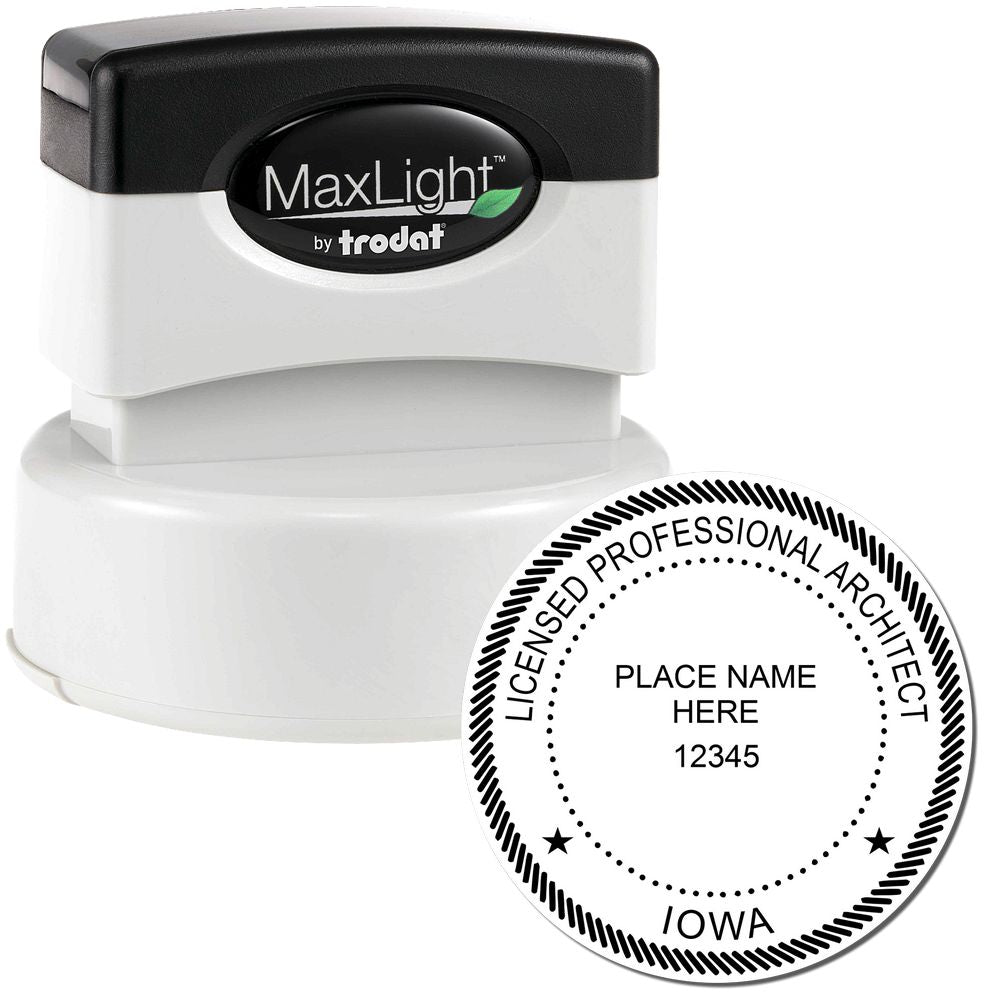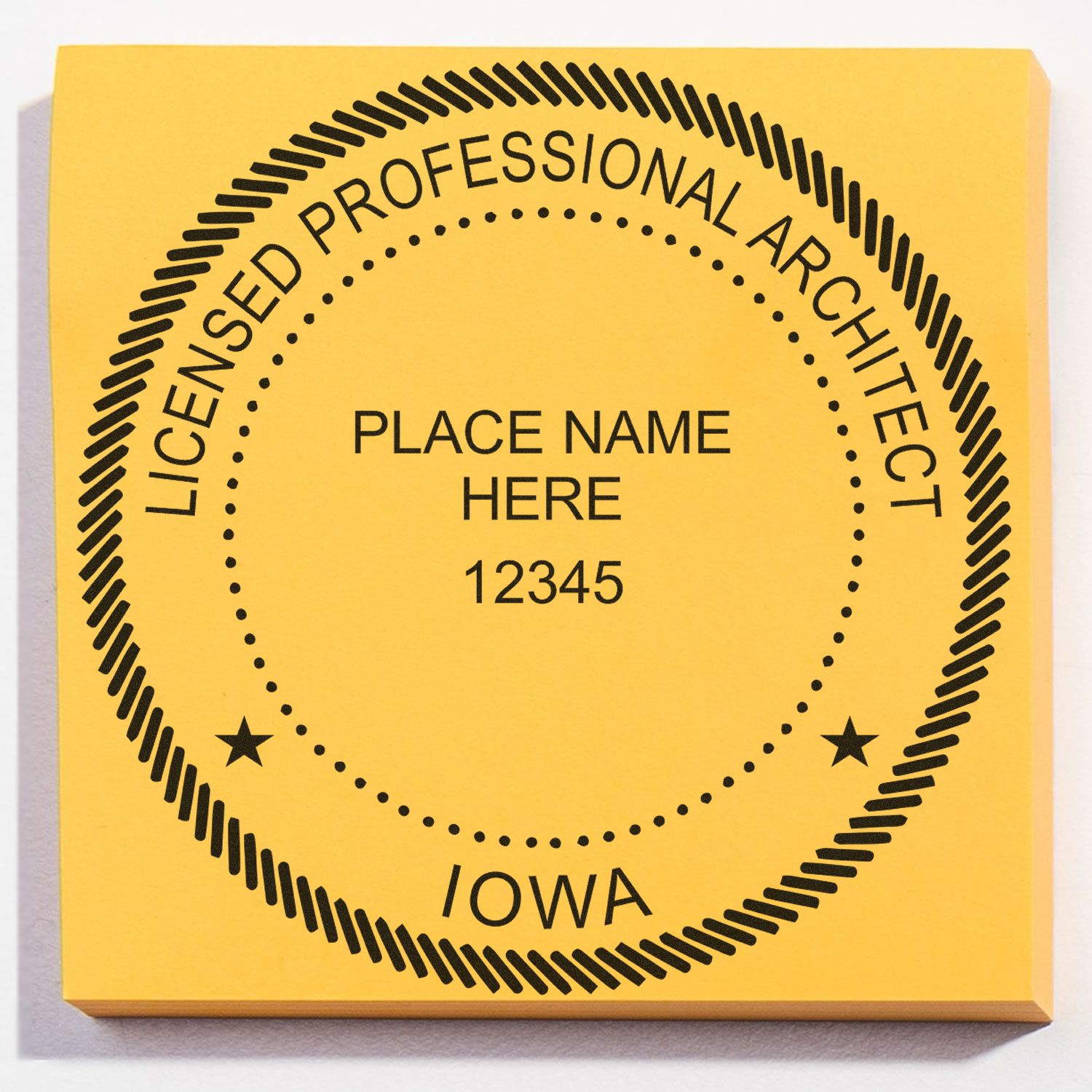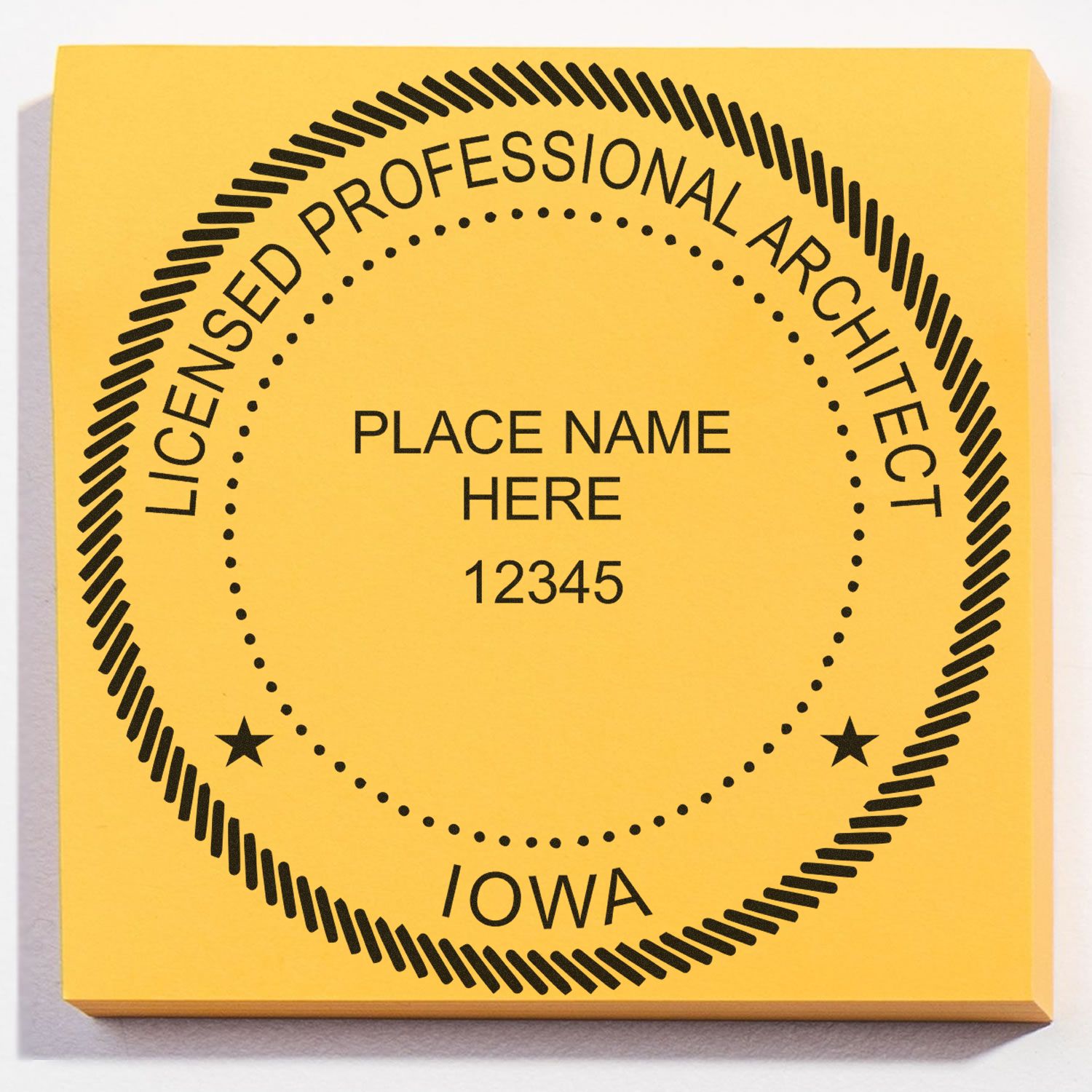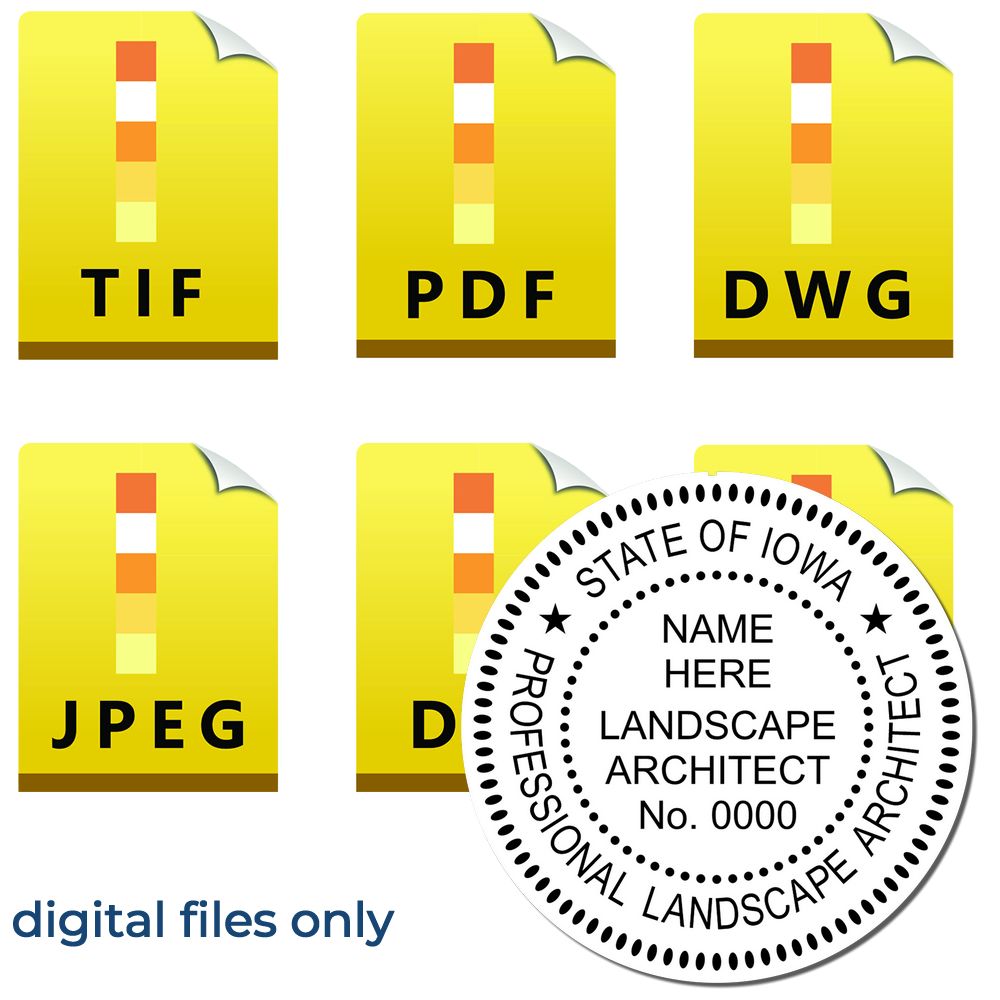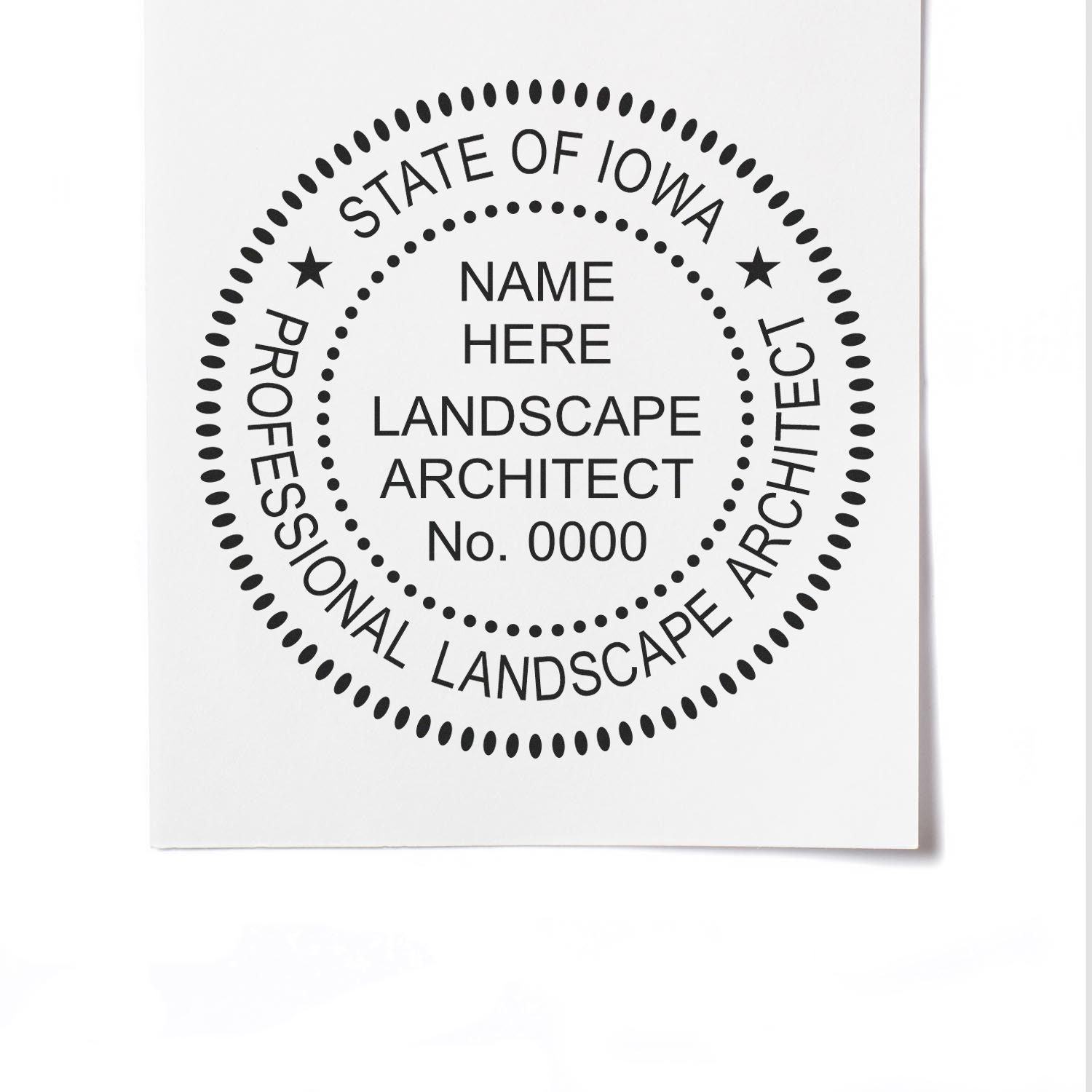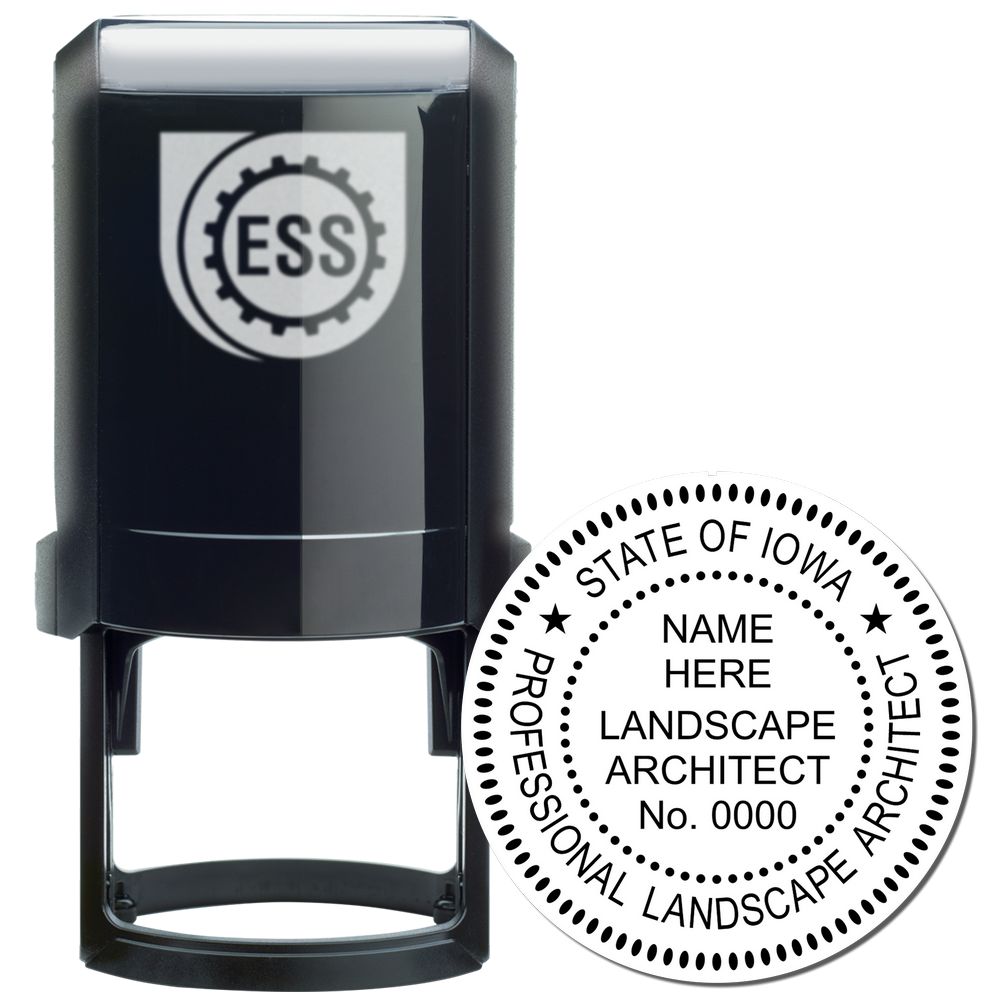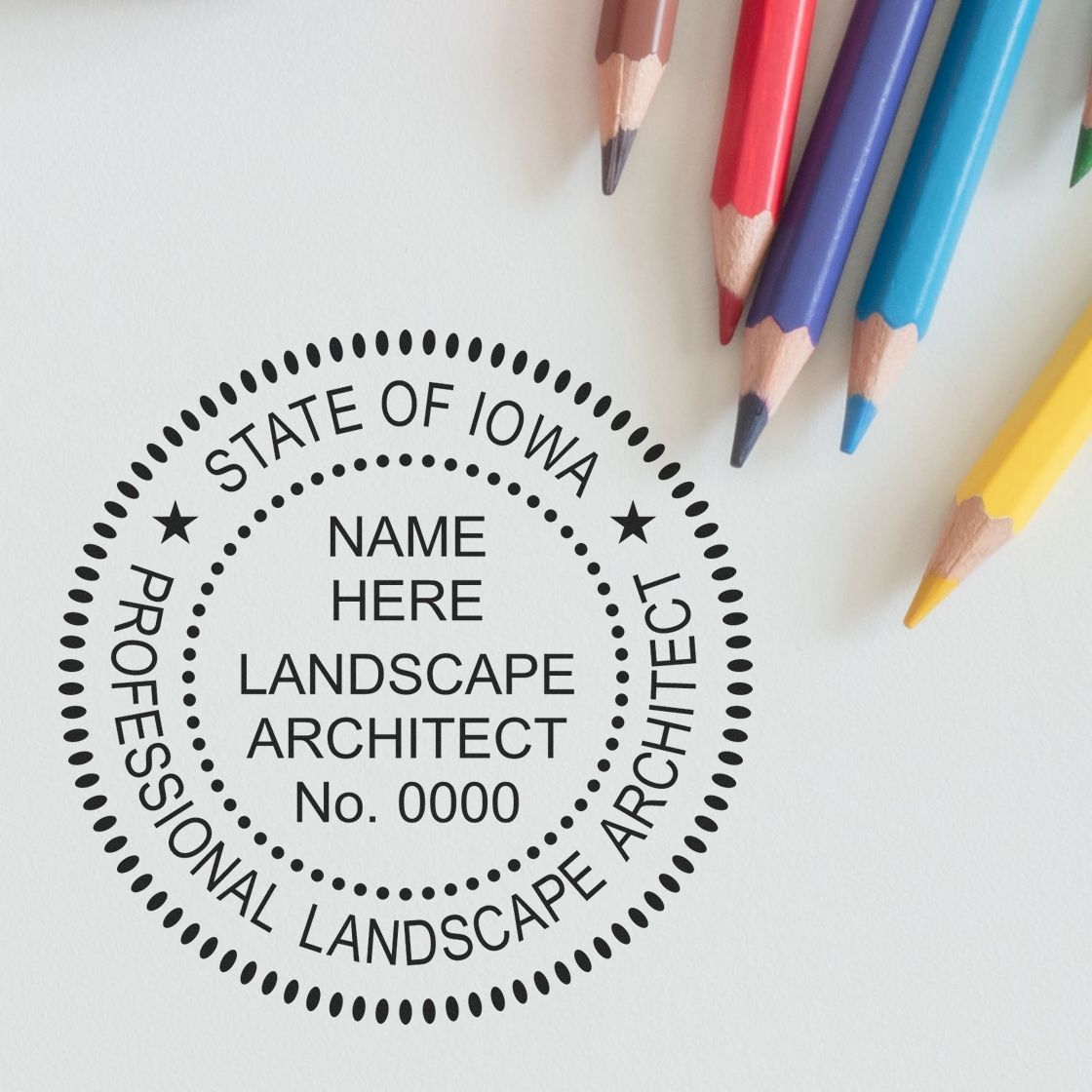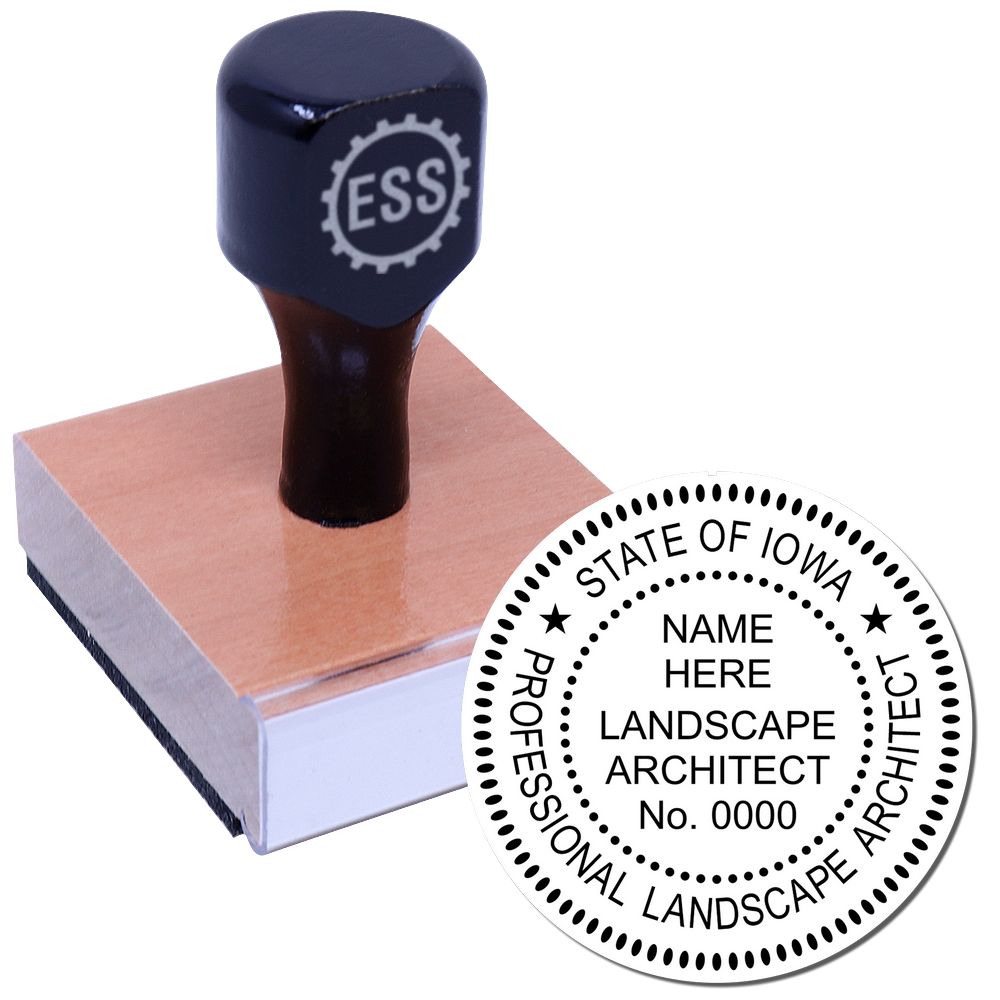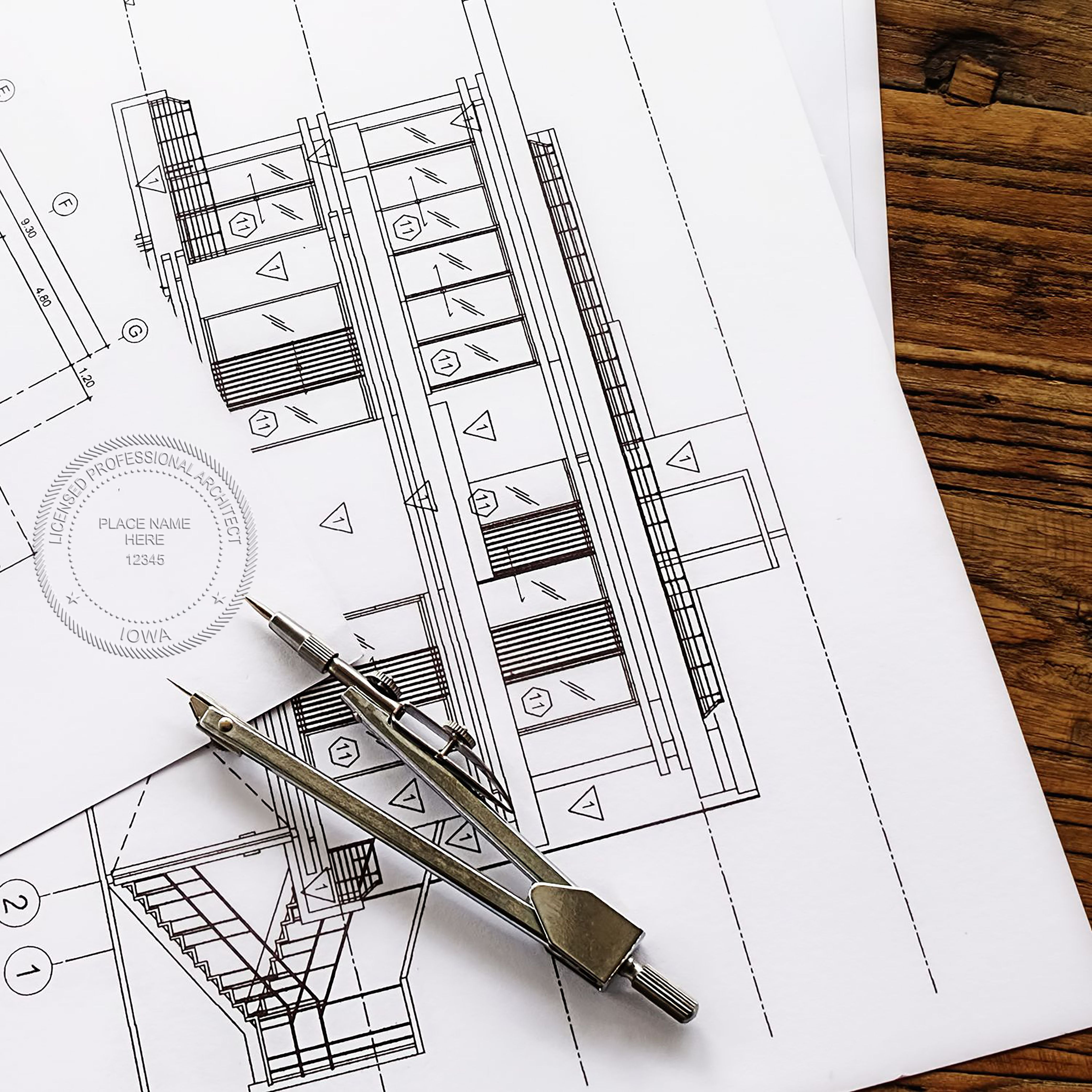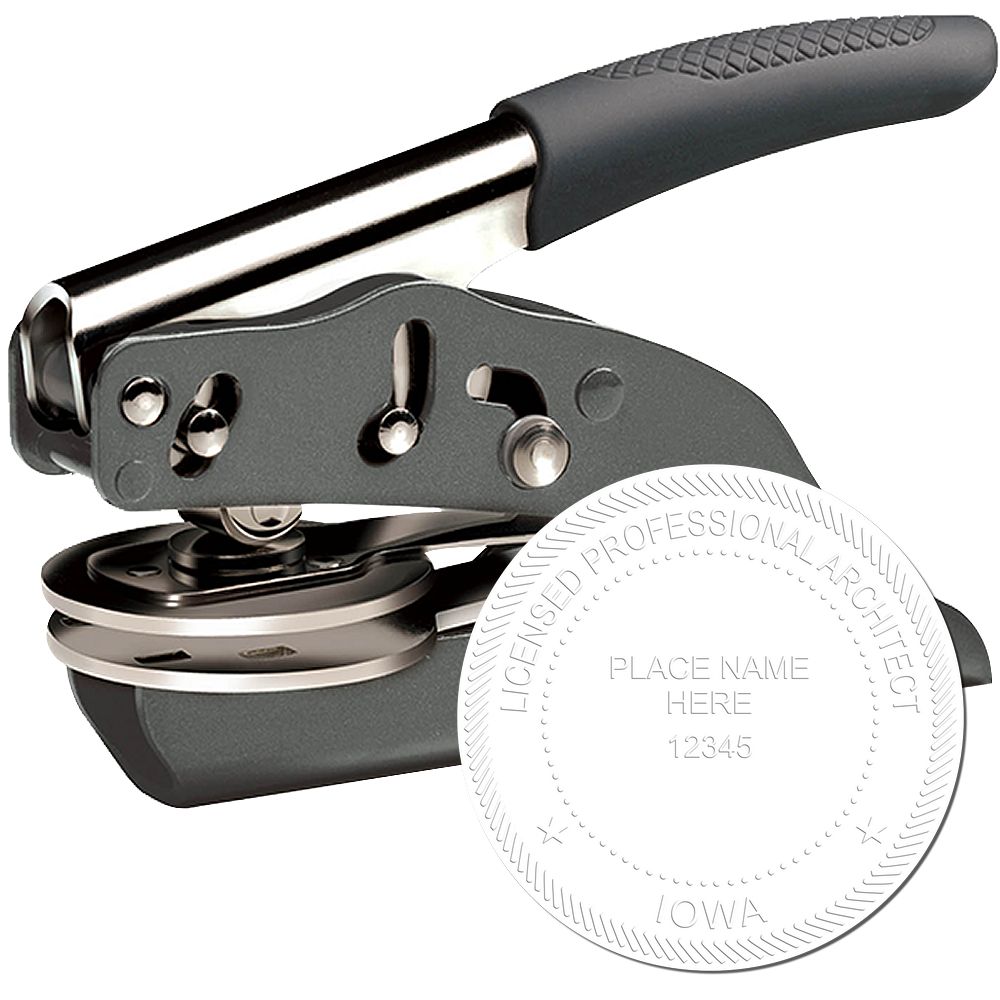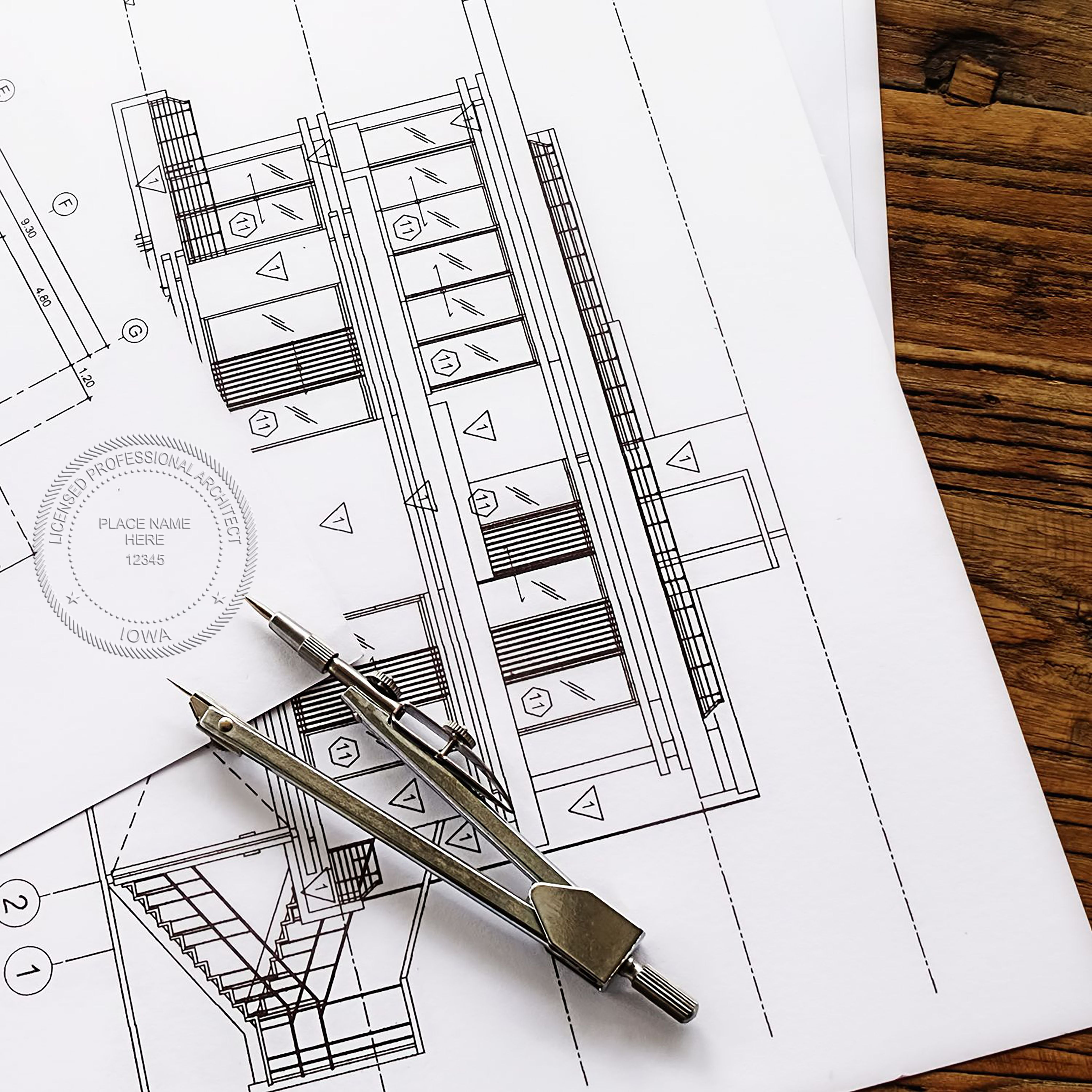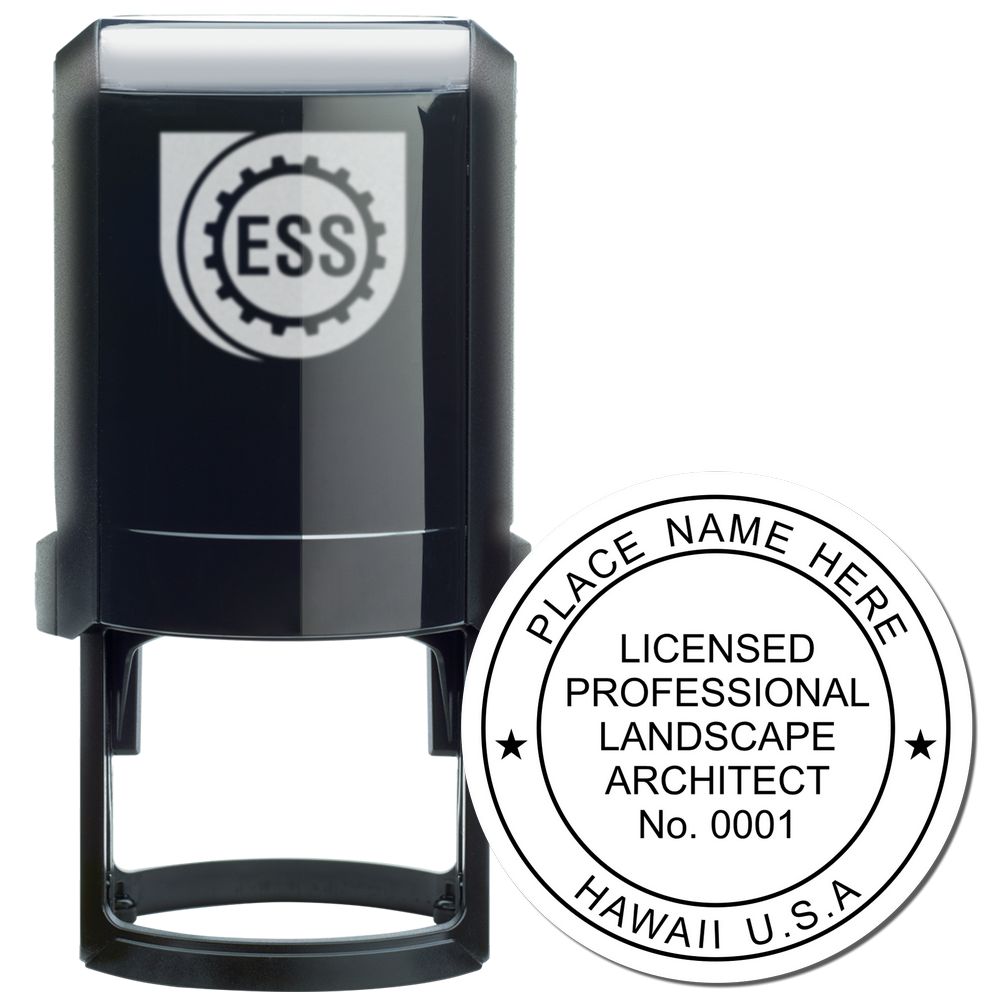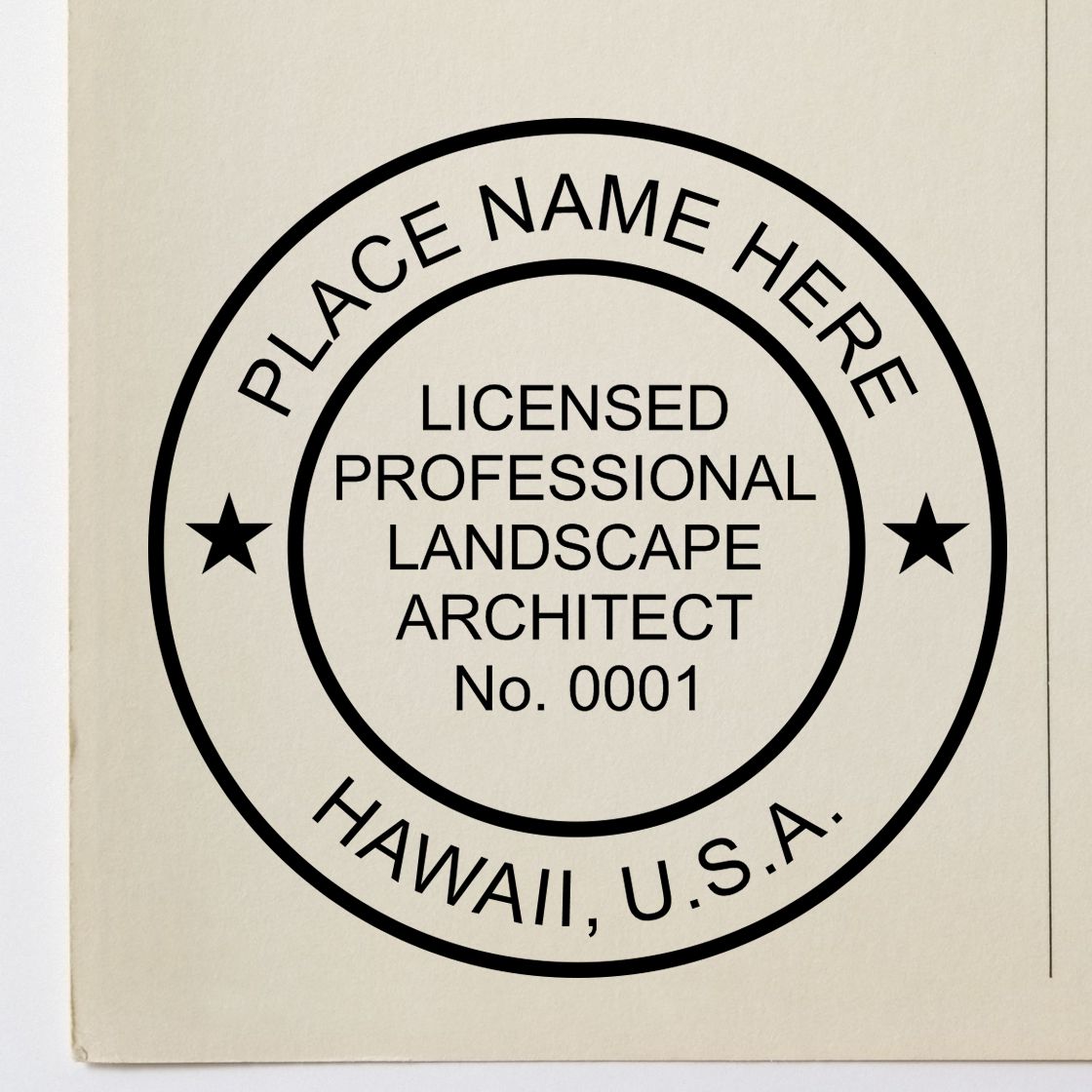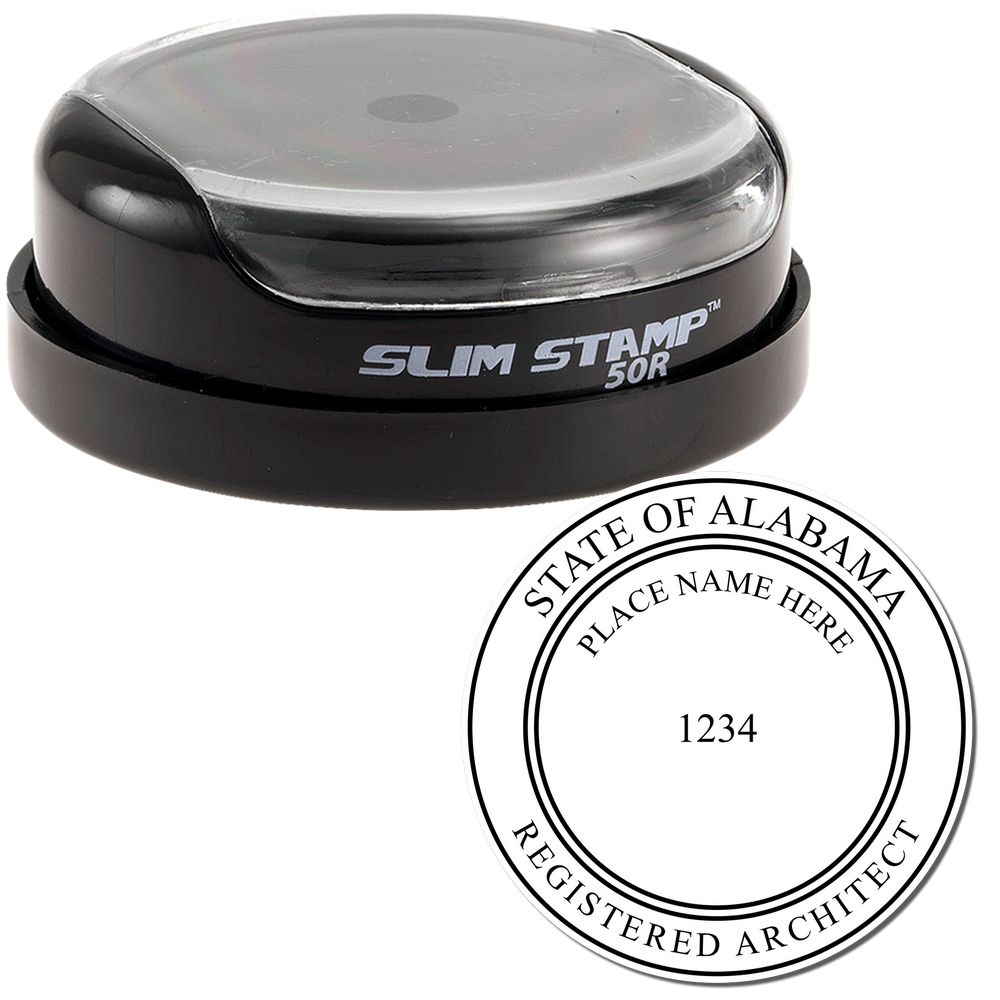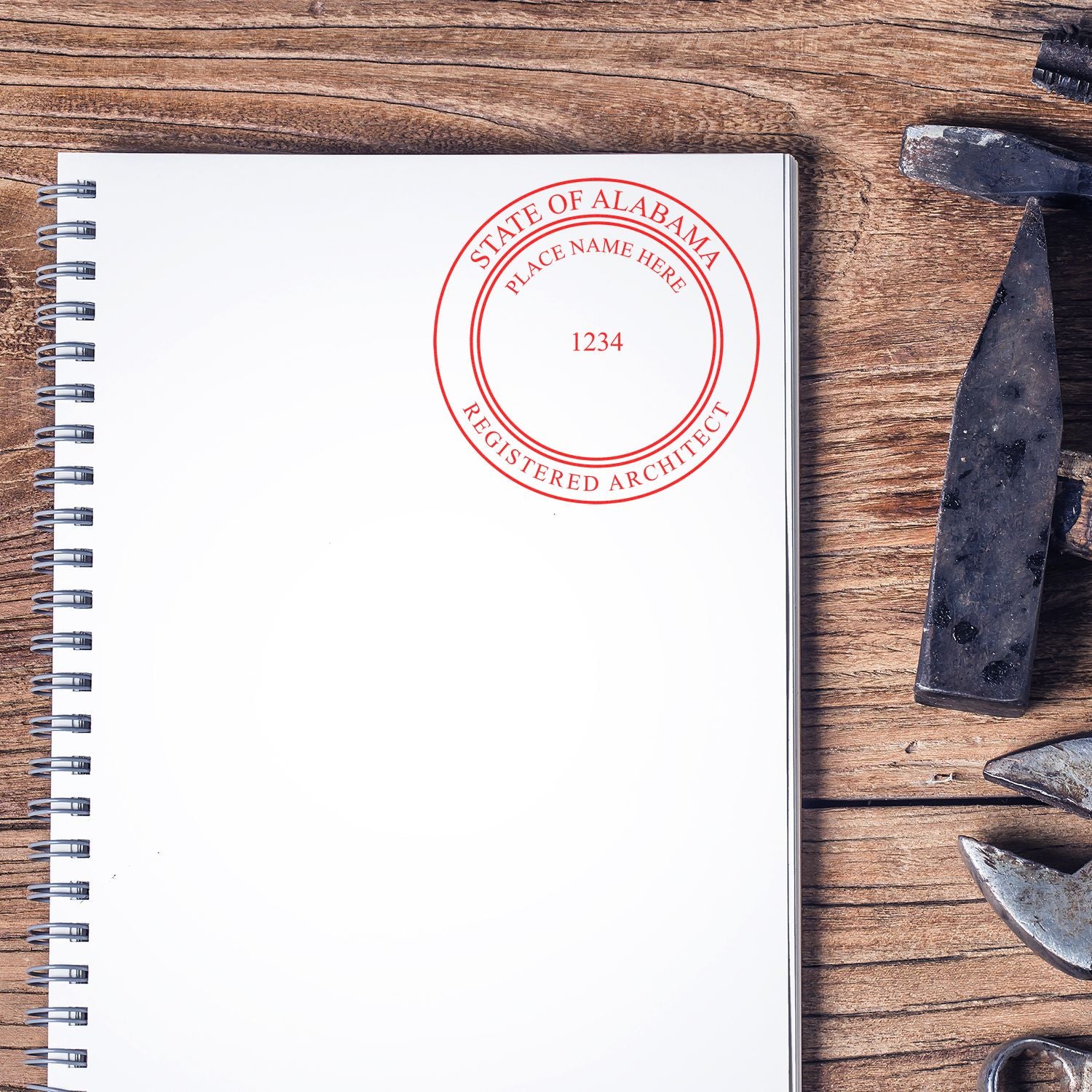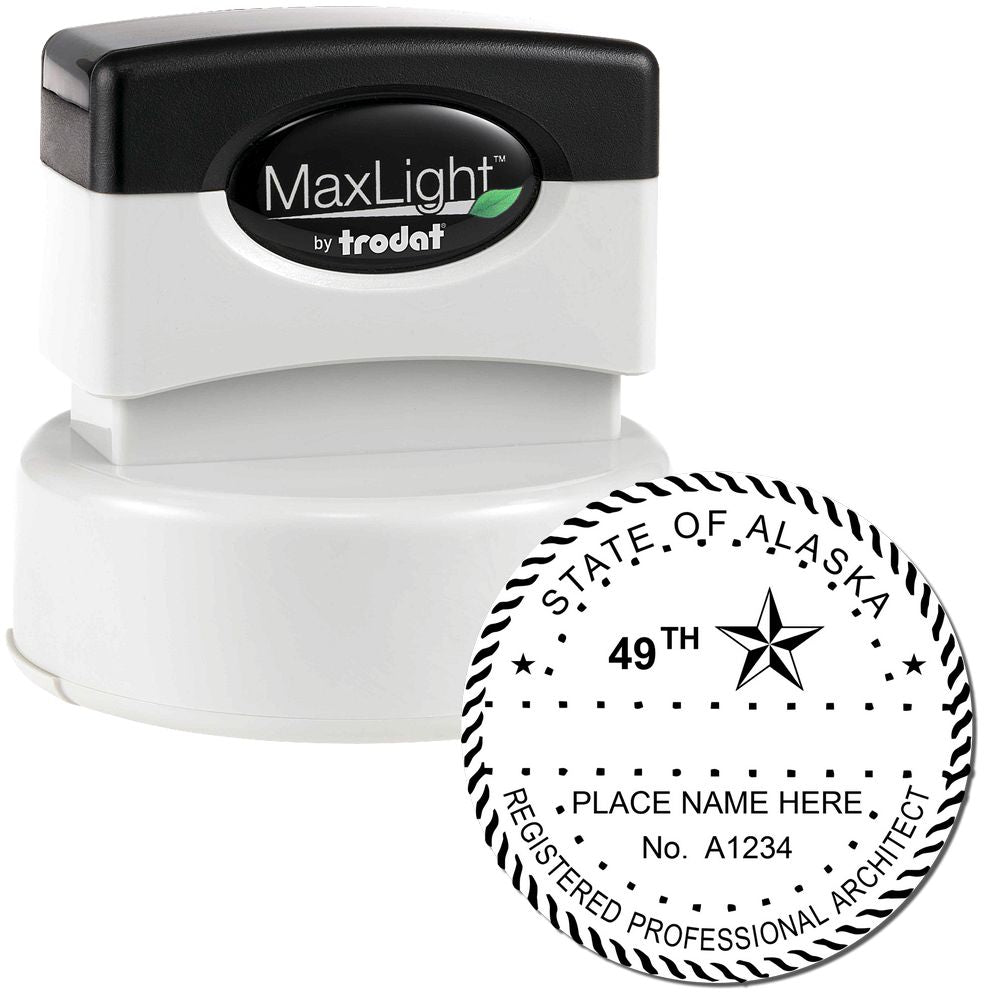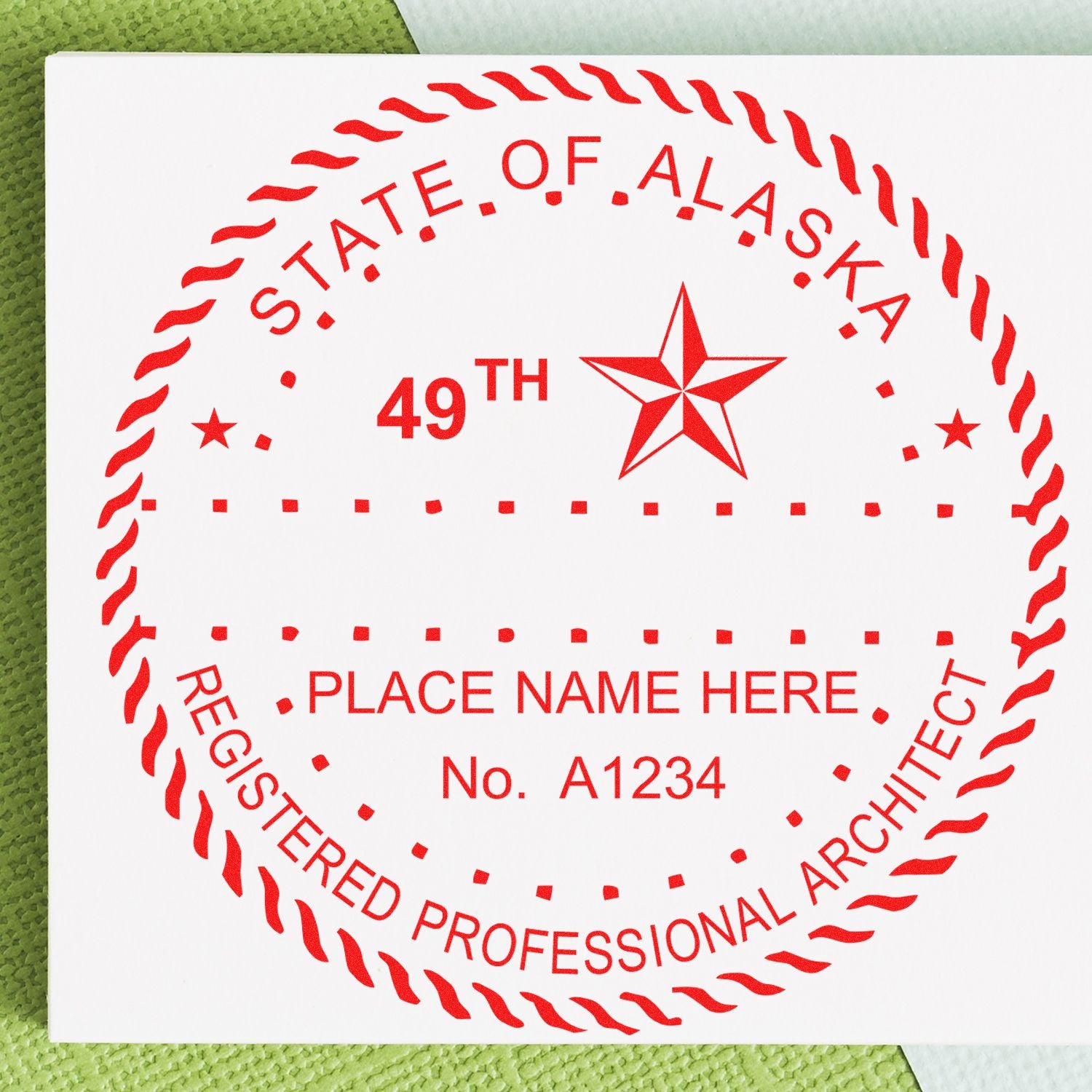The Importance of Architect Seals
Architect seals play a vital role in the field of architecture, serving as a symbol of professionalism, credibility, and compliance. Let's explore what architect seals are and why they hold such significance.
What is an Architect Seal?
An architect seal, also known as an architect stamp, is an official mark or imprint used by licensed architects to authenticate their designs, drawings, and documents. It typically consists of the architect's name, license number, and other relevant information. The seal is applied to architectural plans, blueprints, construction documents, and other professional materials to signify that they have been prepared and approved by a licensed architect.
Why are Architect Seals Important?
Architect seals carry several important purposes and benefits. Here are a few key reasons why architect seals hold such significance:
-
Legal Compliance: Architect seals are often required by state laws and regulations to ensure that only qualified professionals are involved in the design and construction process. In Iowa, for example, architects are legally required to affix their seal to architectural documents as per the iowa architect stamp requirements.
-
Professionalism and Credibility: Architect seals serve as a mark of professionalism and expertise. They provide assurance to clients, contractors, and regulatory authorities that the architectural plans and documents have been reviewed and approved by a licensed architect. This helps establish trust and credibility within the industry.
-
Compliance with State Regulations: Architect seals ensure compliance with state-specific regulations and building codes. By affixing their seal, architects confirm that their designs adhere to all relevant standards and regulations, promoting safety and adherence to legal requirements.
-
Protection Against Unauthorized Use: Architect seals act as a safeguard against unauthorized use or modification of architectural documents. The unique design and information on the seal make it difficult for others to replicate or misuse the architect's work, protecting both the architect's intellectual property and the interests of clients.
Architect seals come in different forms, including traditional rubber stamps, electronic seals, and embossing seals. Each type offers its own advantages and may be preferred based on an architect's personal preference and the requirements of specific projects. For information on the different types of architect seals available, refer to the section on Types of Iowa Architect Seals.
Understanding the importance of architect seals is crucial for architects in Iowa and beyond. By upholding professional standards and using architect seals in their work, architects can demonstrate their expertise, comply with regulations, and provide assurance to clients and stakeholders.
Understanding Iowa Architect Seals
Before delving into the specific aspects of Iowa architect seals, it's important to grasp the legal requirements and the purpose and use of these seals within the state.
Legal Requirements for Architects in Iowa
Architects in Iowa are subject to specific legal requirements to ensure the safety and integrity of architectural designs. The Iowa Architectural Practice Act outlines the regulations and guidelines that architects must adhere to. This Act establishes the Iowa Architectural Examining Board, which oversees the licensing and regulation of architects in the state.
To practice as an architect in Iowa, individuals must meet certain educational and experience requirements and pass the necessary examinations. These requirements are in place to ensure that architects possess the knowledge and skills needed to design buildings that meet safety standards and comply with applicable codes and regulations. For more information on the specific requirements, consult our article on iowa architect stamp requirements.
Purpose and Use of Iowa Architect Seals
Architect seals play a crucial role in the architectural profession, serving as an official endorsement of the architect's work. In Iowa, architect seals are used to authenticate architectural drawings, plans, specifications, and other documents prepared by licensed architects. These seals indicate that the architect responsible for the design has met the necessary qualifications and complies with all applicable laws and regulations.
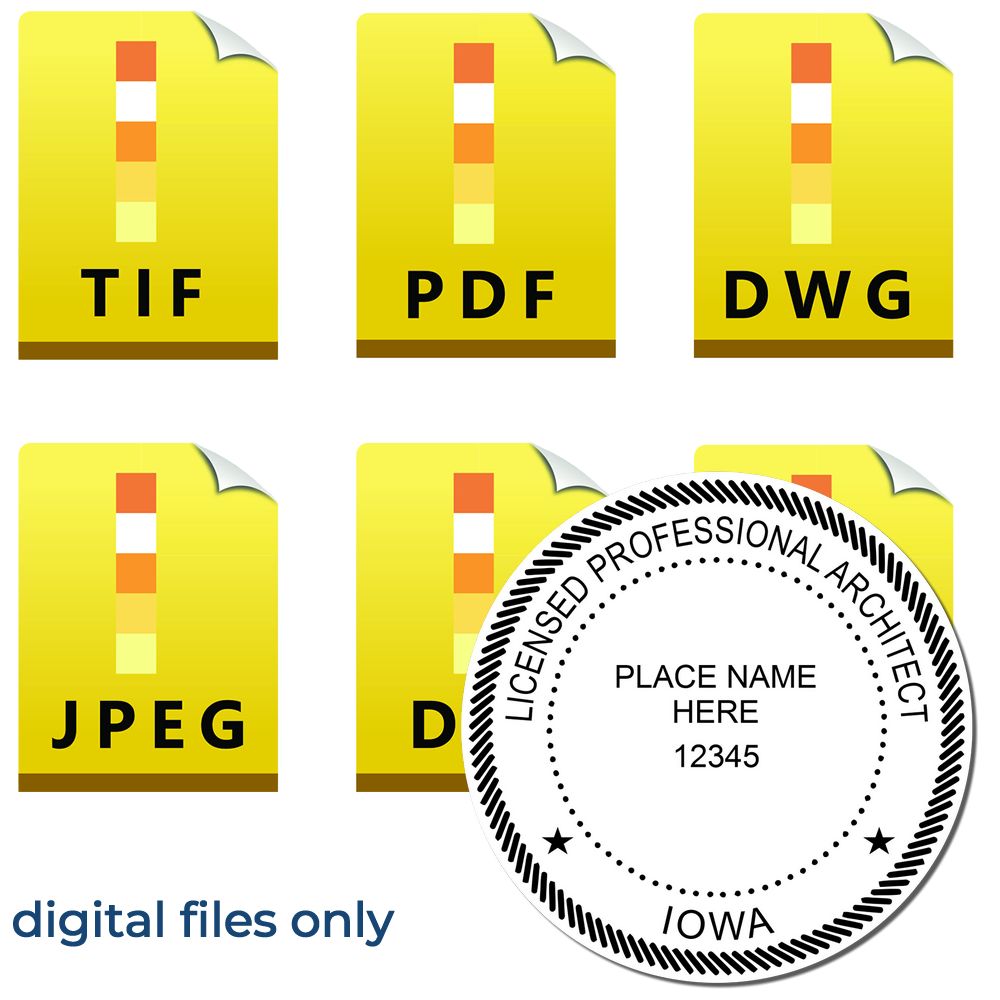

By affixing their seal to architectural documents, architects take legal responsibility for the accuracy and compliance of their designs. The seal serves as a mark of professionalism and credibility, instilling confidence in clients, contractors, and regulatory authorities.
Iowa architect seals also serve as a means of protection against unauthorized use of architectural documents. The seal acts as a unique identifier, making it easier to track the origin of a design and verify its authenticity.
Understanding the legal requirements and the purpose and use of Iowa architect seals is essential for architects practicing in the state. In the following sections, we will explore the various benefits and types of Iowa architect seals, as well as the process of obtaining them.
Benefits of Using an Iowa Architect Seal
Architect seals play a crucial role in the architecture industry, and utilizing an Iowa architect seal comes with several benefits. These benefits include enhancing professionalism and credibility, ensuring compliance with state regulations, and providing protection against unauthorized use.
Professionalism and Credibility
Using an Iowa architect seal adds a touch of professionalism to architectural documents and designs. The seal serves as a visual representation of the architect's expertise and dedication to their craft. By affixing the seal to drawings, blueprints, or other architectural documents, architects can demonstrate their commitment to producing high-quality work that meets industry standards.
Moreover, an Iowa architect seal lends credibility to the architect's work. It signifies that the architect is licensed and authorized to practice in the state of Iowa. This can instill confidence in clients, contractors, and other stakeholders, as they can trust that the architect's designs meet the necessary standards and regulations.
Compliance with State Regulations
Architects in Iowa are required to use an architect seal on their documents to comply with state regulations. The Iowa Architectural Examining Board mandates that architects must affix their seal to plans, specifications, and other architectural documents that they prepare or approve. This requirement ensures that architects take responsibility for their work and adhere to the legal and regulatory framework set by the state.
By using an Iowa architect seal, architects can demonstrate their compliance with these regulations. It shows that they have met the necessary qualifications, obtained the required licenses, and are operating in accordance with Iowa's architectural laws.
Protection Against Unauthorized Use
One of the significant benefits of an Iowa architect seal is that it acts as a safeguard against unauthorized use of architectural documents. The unique design and imprint of the seal make it difficult to replicate or forge. This helps protect the architect's work from being misused or misrepresented by unauthorized individuals.
The presence of an Iowa architect seal on architectural drawings and plans serves as a clear indication that the documents are authentic and have been prepared or approved by a licensed professional. This can deter unauthorized individuals from copying or using the architect's work without permission, providing an added layer of protection for the architect's intellectual property.
In summary, using an Iowa architect seal offers several benefits, including enhancing professionalism and credibility, ensuring compliance with state regulations, and protecting against unauthorized use. Architects in Iowa should prioritize obtaining and utilizing an architect seal to uphold industry standards, demonstrate their qualifications, and safeguard their work. For more information on Iowa architect seals and their requirements, visit our article on architect stamp for Iowa.
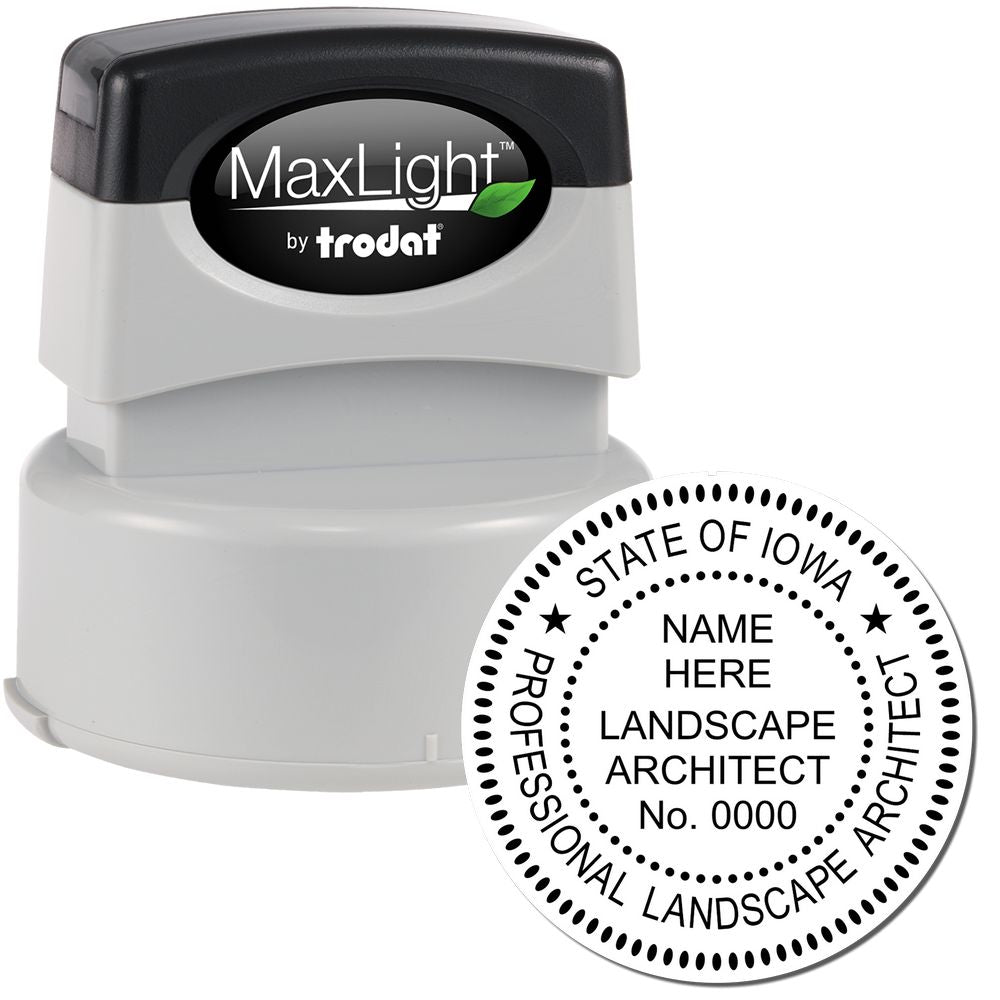

Types of Iowa Architect Seals
When it comes to Iowa architect seals, there are several options available to architects in the state. Each type of seal serves the purpose of verifying the authenticity and professionalism of architectural documents. Here are the three common types of Iowa architect seals:
Traditional Rubber Stamps
Traditional rubber stamps have long been a popular choice for architects. These stamps consist of a rubber stamping surface attached to a handle. Architects can customize the design of the stamp to include their name, license number, and any other required information.
To use a traditional rubber stamp, architects apply ink to the stamping surface and press it onto the document. This leaves a clear and legible imprint of the architect's seal, providing a tangible and professional mark of approval.
Electronic Seals
With advancements in technology, electronic seals have gained popularity among architects in Iowa. Electronic seals are digital representations of an architect's seal that can be applied to electronic documents. These seals typically consist of a unique digital signature that verifies the authenticity and integrity of the document.
Architects can use specialized software or online platforms to apply electronic seals to their architectural drawings and other digital documents. Electronic seals offer convenience and efficiency, allowing architects to securely sign and seal documents without the need for physical stamps.
Embossing Seals
Embossing seals, also known as embossers, create a raised impression on paper. These seals are created by pressing a metal plate with the architect's seal design onto the paper. Embossing seals are often used in conjunction with other types of seals to provide an additional layer of security and authenticity.
To use an embossing seal, architects position the seal on the desired location of the document and apply pressure. The result is a visually striking and tactile impression that is difficult to replicate, adding a sense of professionalism and credibility to the architectural document.
Architects in Iowa have the flexibility to choose the type of seal that best suits their needs and preferences. Whether opting for traditional rubber stamps, electronic seals, or embossing seals, architects can ensure that their documents meet the regulatory requirements and convey the necessary level of professionalism. For more information on Iowa architect seals, including requirements and design considerations, visit our article on architect stamp Iowa.
How to Obtain an Iowa Architect Seal
If you're an architect practicing in Iowa, obtaining an architect seal is an essential step to ensure the legality and credibility of your designs. Here's a guide on how to obtain an Iowa architect seal, including the application process, requirements and documentation, and where to purchase Iowa architect seals.
Application Process
To obtain an Iowa architect seal, architects must go through an application process with the relevant state authority. The specific authority responsible for overseeing architect seals in Iowa is the Iowa Architectural Examining Board. The application process typically involves the following steps:
-
Complete the Application: Obtain the application form from the Iowa Architectural Examining Board's website or office. Fill out the required information accurately and completely.
-
Submit Supporting Documents: Along with the application, you will need to submit supporting documents, which may include educational transcripts, proof of professional experience, and any other documentation required by the board.
-
Pay the Application Fee: There is an application fee associated with obtaining an architect seal in Iowa. Ensure that you include the appropriate payment with your application.
Save 7%
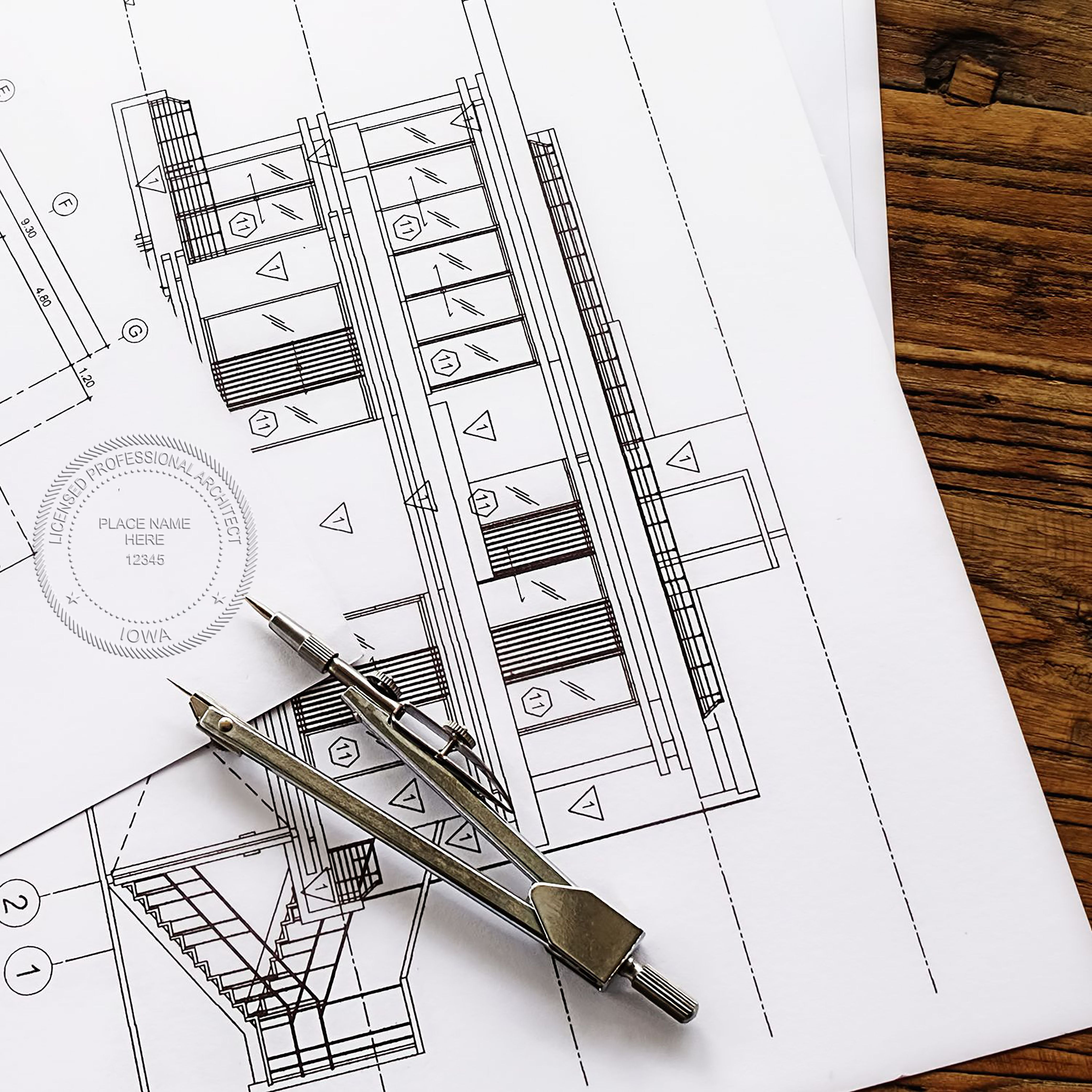 State of Iowa Long Reach Architectural Embossing Seal3022ARC-IASale price$129.95 Regular price$140.00
State of Iowa Long Reach Architectural Embossing Seal3022ARC-IASale price$129.95 Regular price$140.00 -
Review and Approval: Once the board receives your application and supporting documents, they will review your qualifications. If everything is in order, they will approve your application and issue your architect seal.
Requirements and Documentation
The Iowa Architectural Examining Board has specific requirements and documentation that architects must fulfill to obtain an architect seal. These requirements may include:
-
Education: Architects must have a professional degree in architecture from an accredited institution.
-
Experience: The board may require a certain number of years of professional experience under the supervision of a licensed architect.
-
Licensure: Architects must hold a current and valid license to practice architecture in the state of Iowa.
-
Examination: Passing the Architect Registration Examination (ARE) is typically a requirement for obtaining an architect seal.
It is essential to review the specific requirements outlined by the Iowa Architectural Examining Board to ensure compliance. For more information, you can refer to our article on Iowa architect stamp requirements.
Where to Purchase Iowa Architect Seals
Once you have successfully obtained approval from the Iowa Architectural Examining Board, you can proceed to purchase your Iowa architect seal. There are various online retailers and local suppliers that offer architect seals in Iowa. It's important to choose a reputable supplier that provides high-quality seals in compliance with the state's regulations.
When purchasing an Iowa architect seal, consider the design options available to customize your seal according to your preferences. The design of the seal typically includes your name, license number, and the phrase "Registered Architect."
For reliable options to purchase architect seals in Iowa, you can explore our article on architect stamp for Iowa. Ensure that you select a seal that meets the size and format requirements specified by the Iowa Architectural Examining Board.
By following the proper application process, meeting the requirements, and obtaining a legitimate architect seal, you can confidently bring your designs to life while complying with the regulations set forth by the state of Iowa.
About ESS
At Engineer Seal Stamps (ESS), we take pride in being the leading makers of high-quality rubber stamps, professional seals, and notary stamps. Our commitment to excellence is reflected in the state board guarantee that backs all our products. With ESS, you can be confident that you are getting the best of the best when it comes to stamping and sealing products.
Our team of experts will work closely with you to create customized rubber stamps and seals that meet your specific needs, whether you are an architect, engineer, surveyor, or other professional. We understand that time is of the essence in your line of work, which is why we offer a quick turnaround on all our products. ESS is also incredibly versatile, we cater to a broad range of industries, from oil and gas to healthcare, government, and education. When it comes to quality, our products speak for themselves. All our rubber stamps and seals are made using high-grade materials, ensuring that they will last you for years to come. Our stamping and sealing products are also designed to deliver crisp and clear impressions every time, so you can always be sure that your documents look professional and presentable.
At ESS, we are committed to providing our customers with stellar customer service, and we go above and beyond to ensure your satisfaction. Whether you need a customized rubber stamp, professional seal, or notary stamp, ESS is the trusted partner you can rely on for all your stamping and sealing needs.

